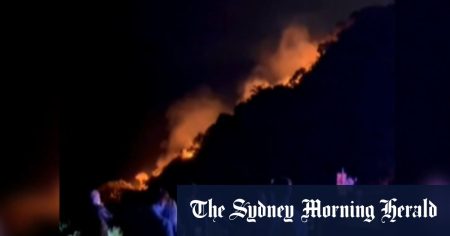The State Emergency Service (SES) in New South Wales responded to more than 4900 incidents over the weekend with over 5000 volunteers deployed state-wide. The Illawarra region also suffered from the wild weather, with train lines being affected. The South Coast line between Waterfall and Bomaderry was closed due to damage along the line, leading to buses replacing trains in both directions. Other public transport services were running on altered timetables as recovery efforts continued. The state government declared the flooding event a natural disaster on Sunday, opening the flow of funds from both state and federal governments for financial support for those who lost homes or businesses impacted by the severe weather.
The financial support allocated by the government will assist residents in 13 local government areas, including the Blue Mountains, Camden, Hawkesbury, Kiama, Liverpool, Penrith, Shellharbour, Shoalhaven, Sutherland, Upper Lachlan, Wingecarribee, Wollondilly, and Wollongong. NSW Premier Chris Minns highlighted that the money, distributed under the federal government’s Disaster Recovery Funding Arrangements, will primarily focus on supporting individuals who lost their homes in the flooding. Funds will also be directed towards local councils to repair essential public infrastructure. Minns expressed that federal and state funds will be channeled to local councils and communities that have been severely impacted over the past 28 hours, particularly those who have lost their homes or are in danger due to the extreme weather conditions.
The flooding and severe weather caused widespread damage and disruption across New South Wales, prompting a significant response from emergency services and volunteers. The state government’s allocation of financial support aims to provide relief to individuals and communities affected by the natural disaster. The closure of train lines and the need for buses to replace trains in certain areas have further added to the challenges faced by residents and commuters. The ongoing recovery efforts will require coordination between various government agencies, local councils, and community organizations to ensure a comprehensive response to the aftermath of the severe weather event.
The declaration of the flooding event as a natural disaster signifies the seriousness of the situation and the need for coordinated efforts to address the impact on affected communities. The financial assistance provided by the government will be crucial in helping individuals and businesses recover from the damage caused by the severe weather conditions. NSW Premier Chris Minns emphasized the importance of supporting those who have lost their homes and ensuring that essential public infrastructure is repaired to restore normalcy in the affected areas. The collaboration between state and federal governments, as well as local authorities, will be key in facilitating a swift and effective recovery process for the affected regions.
The mobilization of over 5000 SES volunteers demonstrates the dedication and commitment of emergency responders in addressing the challenges posed by the severe weather event. The closure of train lines and the disruption to public transport services underscore the widespread impact of the flooding and the need for alternative transportation arrangements to be put in place. The government’s prompt declaration of the flooding as a natural disaster enables the expedited release of funds for financial support and infrastructure repair, signaling a proactive approach to addressing the needs of affected individuals and communities. The resilience and solidarity shown by emergency services, volunteers, and residents in the face of adversity highlight the strength of community spirit and the collective efforts to overcome challenges together.













